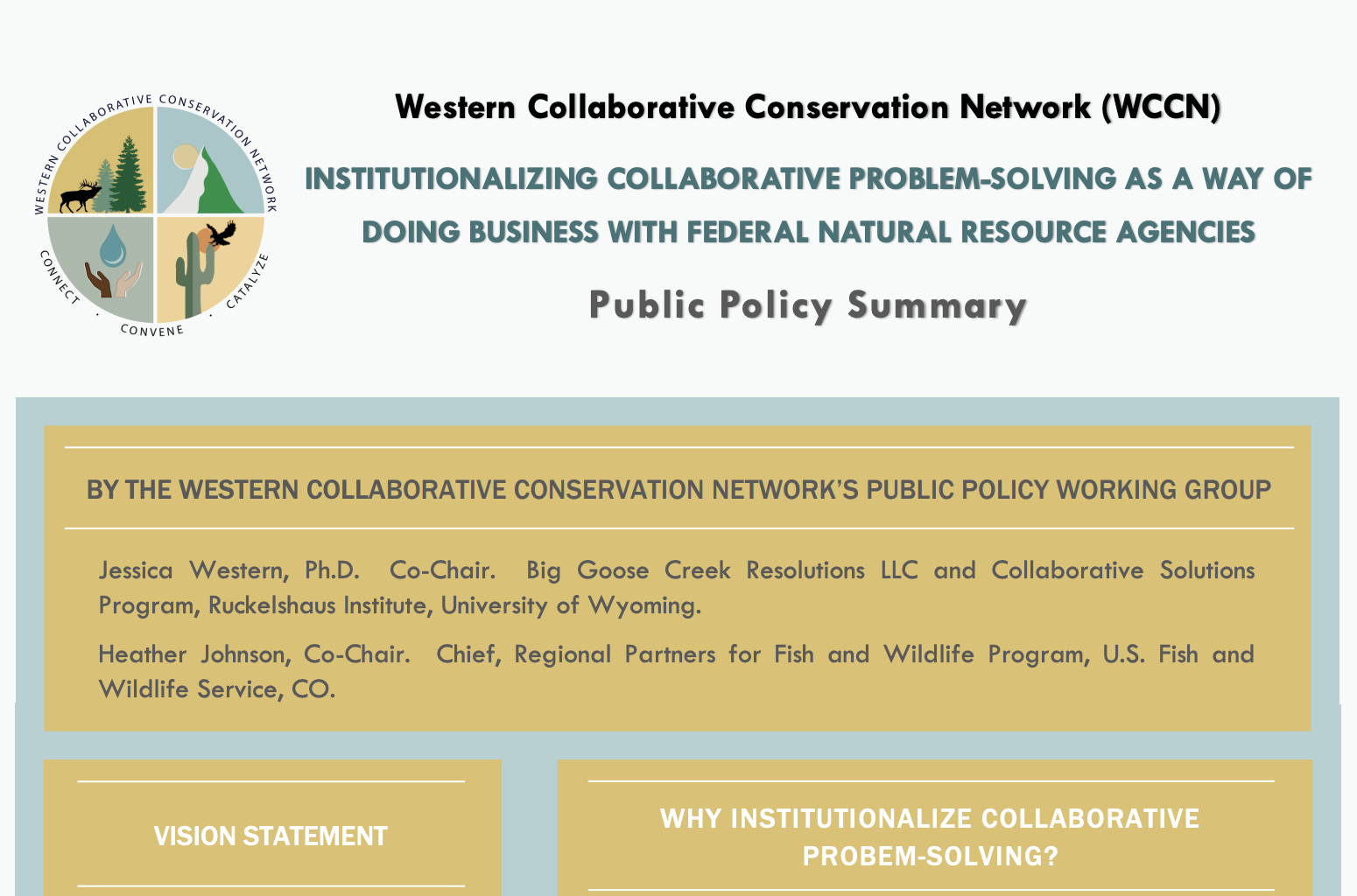In light of the local partnership and collaborative conservation vision of the current Administration highlighted in the recently released America the Beautiful report, the Western Collaborative Conservation Network is pleased to share recommendations developed over the last two years for those federal agencies, and by extension other agencies and organizations, that want to work collaboratively with local and landowner perspectives to ensure that collaborative approaches are an important part of their work.
WCCN feels that institutionalizing collaborative problem-solving is important because it requires listening and participation by all perspectives and, when done well, results in actions and activities that are supported by a broad range of interests that achieves multiple objectives in addition to the specific mandate of any one federal agency. When multiple objectives are met, solutions tend to be more sustainable over time, and as relationships solidify and trust across stakeholders grows, more issues may be addressed in a collaborative fashion.
This summary identifies 5 issues and associated recommendations that WCCN feels are critical in institutionalizing collaborative problem-solving. These issues include: a lack of relationships and trust at local levels; collaborative capacity within agencies; social capacity; inconsistent public engagement approaches; and policies and agency funding.
While written with federal agencies specifically in mind, many of these same issues and recommendations are relevant to the broad suite of natural resource interests (local, state, nonprofit, university, etc.) that seek to engage local interests in working landscapes to achieve a broad range of outcomes related to both natural and human sustainability and well-being.
A message from the top identifying and directly endorsing collaborative problem-solving is a monumental step; however, as Partnerscapes has learned over the years, the most effective and long-lasting collaborative efforts tend to flow from the bottom up. Understanding, skills development, and organizational support for the collaborative approach are important at all levels from top to bottom and among all interests from individual to institutional to make collaborative-problem solving the first choice as opposed to the last resort for getting things done.

